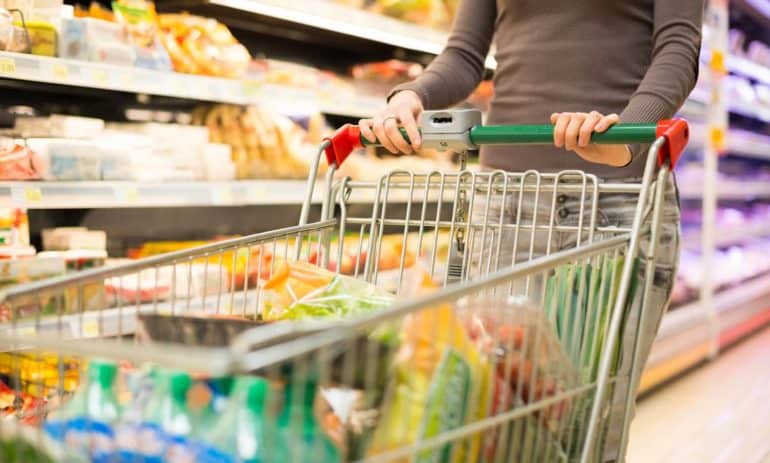According to new research, the average American throws away 422 grams, or nearly 1 pound, of food each day. It has been estimated that 40 percent of the food produced in the United States is wasted every year. All that waste costs households, businesses, and farms about US$218 billion annually—a number which doesn’t include damage to water, soils, and the climate by producing the food.
Households are responsible for a lot of that wasted food, and there is a large potential for change to reduce the amount of wasted food. But the blame shouldn’t be entirely in the consumers’ basket—where food is sold plays a big role in what consumers buy and even their likelihood of throwing it out too soon.
Supermarkets not only influence what makes it from farms to shelves through their own purchasing choices, but they also impact what shoppers put in their carts through stocking and promotion of products. Food’s packaging influences whether we’re likely to buy too much and if we may be misled by confusing date labels.
Checked Out, a new report by the Center for Biological Diversity and the Ugly Fruit and Veg Campaign, found that 9 out of the 10 largest U.S. grocery companies haven’t taken the first step to take responsibility for their contribution to food waste: publicly tracking and reporting total wasted food. And fewer than half have made a specific commitment to fighting food waste.
If stores are transparent about the waste being produced throughout their operations, both consumers and businesses will be able to better understand the scope of the problem and whether efforts to address it are effective. The largest grocery retailers in the U.S. have programs to donate some portion of their food waste, but according to the report, the sector as a whole is doing very little to prevent food waste from the start.
If we want to tackle food waste, we need the support of grocery stores.
When supermarkets only stock perfectly round apples and straight carrots, customers get used to thinking produce has to look a certain way. Meanwhile, by relaxing cosmetic standards, more than 250,000 tons of edible produce could be saved annually from being left to rot in the field. If supermarkets promoted ugly produce, easing standards to allow different sizes and shapes of fruits and vegetables to be sold, it would give customers more options, help farmers, and reduce food waste.
Instead of pushing customers to buy more than they need with buy-one-get-one free models and other promotions, stores should offer meal-planning tools and use emerging technology that helps monitor temperatures and conditions of perishable foods with real-time analytics. For example, Target and Whole Foods have implemented technologies that customize store delivery organization to better prevent food waste between warehouses and retail shelves.
Supermarkets in the U.S. market also need to push for standardization of date labels to reduce the confusion that leads to perfectly good food getting tossed too soon. Most date labeling is based on an estimation of peak freshness rather than product health, safety, and edibility. Standardizing these labels can reduce the amount of edible food thrown out by the store and after customers get their groceries home.
Behind the aisles, stores can institute corporate policies to reduce supply chain waste, such as committing to whole-crop purchasing. This is a policy by which companies purchase a supplier’s entire crop and agree to buy seasonal produce as well as any unexpected surplus, taking a big chunk out of supply-chain food waste.
Supermarkets can also adopt sustainable seafood policies, like only purchasing from suppliers that have committed to the elimination of bycatch to avoid supporting poorly-managed fisheries. Grocery stores can institute practices that promote quicker, fresher, longer-lasting food transport, packing, and delivery.
Major European supermarket giants, like Tesco and Sainsbury’s, are implementing many of these policies with great success. Tesco has been able to reduce its food waste to less than 1 percent, and no food from Tesco has gone to landfill in nearly a decade. Unfortunately, few U.S. supermarkets have implemented these strategies.
Food production is a leading global contributor to climate change, pollution, and land degradation, so wasting food wastes precious and limited natural resources, as well as money.
Many companies care about these issues. So do customers. Food is too valuable to simply throw away. It’s time to bring supermarket food waste from the bin out into the open so the grocery sector can do its part to fight food waste.











